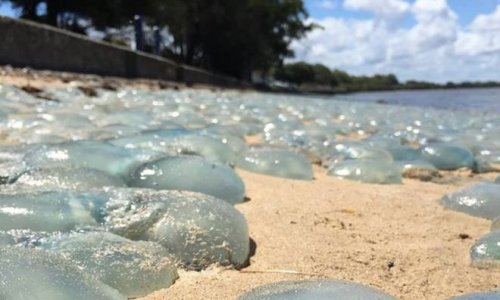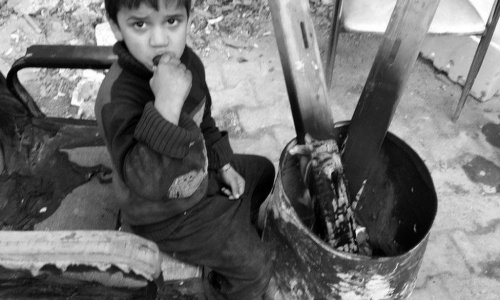"Wakayama? Wakawhat? Wakawhere?"
Overshadowed by the neighboring city of Osaka, this humble Japanese prefecture is home to arguably Japan's most delicious ramen, a 1,700-year-old fire festival and a giant open-air bath fed by a hot spring.
You'll find much of what you need for the complete Japanese experience on this little crescent of land on the southern coast of the country's largest island, Honshu.
Here are 11 ways to begin to get to know this little Japanese secret.
1. Eat Japan's "most delicious" ramen
Ever since Ide Shoten's Wakayama ramen was voted "Japan's most delicious" by a Japanese food show, this humble noodle shop has become sacred ground for ramen lovers.
Wakayama ramen has a unique soup base, made with an extremely savory pork bone and soy sauce broth.
But it's generally known to locals as chuka soba -- not ramen -- which means "Chinese noodles" in Japanese. These steaming bowls of soup with their satisfying pork and lard flavor can fast become an addiction.
Cooked eggs and mackerel sushi on tables are the traditional appetizers. Diners just have to report how many they have eaten when it's time to get the bill.
How to get there: Exit from Wakayama JR station, walk straight ahead then turn left at Kokutai Road. Walk straight until you reach Sannen-zaka Dori. Ide Shoten is on the left.
Ide Shoten, 4-84 Tanaka Town, Wakayama City; 11:30 a.m.-11:30 p.m., closed on Thursdays.
2. Learn how to cut fresh tuna
Wakayama's fish markets may not share the fame of their Tokyo counterpart, Tsukiji fish market, but they're just as noteworthy.
Kuroshio-Ichiba Market hosts three entertaining tuna-cutting shows daily. Porto Europa, a Europe-themed amusement park, is another attraction right next door.
The Katsuura Port fish market in the southeast corner of the prefecture is also worth a visit, if only because it's famous for hauling in the biggest tuna in Japan.
After viewing the daily tuna auction from the observation area, visitors can sample the goods -- seared tataki, sushi or sashimi -- in Katsuura town.
How to get there: A shuttle bus transports visitors from JR Kainan station (one stop from Wakayama station) to Kuroshio-Ichiba Market. Or take a taxi to Kuroshio-Ichiba Market, which will cost JPY1,300 (US$13). To get to Katsuura, take the JR line to Kii-Katsuura station. The fish market is five minutes away on foot.
Kuroshio-Ichiba Market, Marina City, 1527, Kemi, Wakayama-shi, Wakayama-ken, Japan; open daily, 10 a.m.-5 p.m.; tuna-cutting show at 11 a.m., 12:30 p.m. and 3 p.m.
Katsuura tuna auction, 7-8-2 Oaza Tsuikiji, Nachi-Katsuura Town, Higashimuro District; opens at 7 a.m., closed on Saturday and the day before holidays.
3. Walk Kumano Kodo
Japan's best unknown hike, Kumano Kodo is the perfect Kii Mountain getaway.
Made up of seven routes of various difficulties through the south of Wakayama prefecture, the hike was originally an ancient pilgrimage leading to three major Japanese shrines: Hongu Taisha, Nachi Taisha and Hayatama Taisha.
Our recommended route starts from Tanabe City (Kii-Tanabe JR station) to Nachi Fall (Nachi JR station).
The easily navigable routes are dotted with numerous onsen (hot spring) towns, scenic valleys and restaurants serving rustic Japanese cuisine.
4. Cook 'hot spring egg' in a real onsen
There's no better way to whip up a batch of onsen tamago -- or hot spring egg -- than actually boiling it in an onsen.
Visitors to Wakayama can do so at the public cooking basin in the Yunomine onsen area, the only UNESCO World Heritage hot spring in the world.
All you need to do is buy eggs and other vegetables from the local store near the hot spring basin -- they come pre-prepared for cooking in a net -- and boil them in the basin.
Local residents often buy onsen water ($1 for 10 liters) to bring home for cooking.
How to get there: Take a bus from Tanabe (Kii-Tanabe JR station) or Shingu (Shingu JR station).
5. Check out the Nachi Fire Festival
Wakayama's Nachi Fire Festival, held every July, celebrates the homecoming of the Nachi Waterfall's god.
The 1,700-year-old event is considered one of the most sacred festivals in Japan.
Tucked away on Nachi mountain, home to the Nachi Taisha shrine and 133-meter-high falls, the festival involves dozens of young Japanese men carrying 12 gigantic torches up and down the stone staircase that leads to the falls, shouting enthusiastically all the way.
It's quite a sight (and sound). Each torch weighs about 50 kilograms and youngsters have to take a turn carrying one.
Locals sit near the stairs on the mountain to cheer on teams. Be there early to secure a good view.
6. Live like a monk
Living (temporarily) in a temple has become the latest trend for travelers to Wakayama.
The holy Buddhist grounds in Koyasan have 52 temple lodgings for visitors seeking a tranquil stay that includes meditation, temple services, Buddhist gardens and vegetarian cuisine.
Book your Koyasan temple stay and check train schedules to Koyasan in advance.
7. Enjoy hot springs in the wild
Wakayama has plenty of ancient onsen spots. Saki-no-yu in Shirahama, south of Wakayama, is a public bath right on the shore of the Pacific.
Sennin-buro in Kawayu, southeast of Wakayama city, is a giant 73 C pool right in the river. It's also Japan's biggest open-air bath.
The city of Katsuura has a few onsens with amazing views -- Hotel Nakanoshima, on a small island off the port, has onsens looking over the ocean and Hotel Urashima has an ancient bathing site in a cave.
For a less exposed onsen experience, you can soak your feet in hot spring water while you dine at Ashiyu-Yokocho, a Japanese restaurant/feet onsen in Shirahama.
8. Visit Nitama, the new cat in charge of Kishi station
Tama was a cat that saved Wakayama's little-visited Kishi Train Station from financial ruin when she was, improbably, appointed its stationmaster -- instantly making it a tourist attraction.
Since the feline stationmaster passed away in 2015, her apprentice Nitama has succeeded to the position, beating several other cat candidates to run Kishi train station in the rural Kinokawa neighborhood.
Learn more about the curious story of Tama and Nitama here: The cat that saved a Japanese train station.
How to get there: Kishi station is a 30-minute ride from Wakayama City's main train station.
9. Get a castle-view hotel room in Wakayama City
You'll find the best view of Wakayama Castle from the hotels across the road.
Daiwa Roynet Hotel Wakayama and Wakayama Tokyu Inn are two of the best options. Ask for a castle-view when making a reservation.
Explore the peaceful castle gardens and the panoramic views from the top once you've checked in.
The castle also hosts exhibitions about the history of the city. There's a small entrance fee (JPY150, or $1.5) but the rest of the park is free to the public.
10. Feast on fruit
Whether you want to try hardcore fruit-picking or just eat a few from the supermarket, an orange-related experience in Wakayama is definitely recommended.
The prefecture is a self-proclaimed kingdom of fruit and produces one of the best varieties of Mandarin oranges in the world.
Named after their growing area, Arida are thin-rind mandarins said to have the perfect balance of sweet and sour. The fruit are so delicious and juicy they qualify as a dessert in Japan.
The prefecture also has no shortage of strawberries, grapes and persimmons. And at Minabe, the largest ume (Japanese apricot) producer in Japan, you can get tipsy on lovely ume wine.
Wakayama City, the capital city of Wakayama Prefecture, is about 35 minutes by train from the regional Kansai Airport and 550 kilometers from Tokyo.
11. Go white-water rafting -- while standing up
Think sitting in an inflated raft while rushing down white-water rapids is hardcore?
You haven't tried Japan's wildest rafting experience.
Kitayama village offers tourists a chance to sail down the swift currents of Kitayama River on traditional logging rafts.
Here's the kicker -- you're not even seated.
Riders stand in a line on the sturdy, long wooden rafts, clutching only the metal/wooden handles that rise from the base of the rafts.
The adventure sport was inspired by Japan's traditional lumber industry, in which felled wood was assembled into rafts then sent down the river -- a transport method used for more than 600 years.
Game? The rafting season lasts from May to September, with reservations accepted from April 1. Days and times vary depending on month.
(CNN)




www.ann.az
Follow us !











